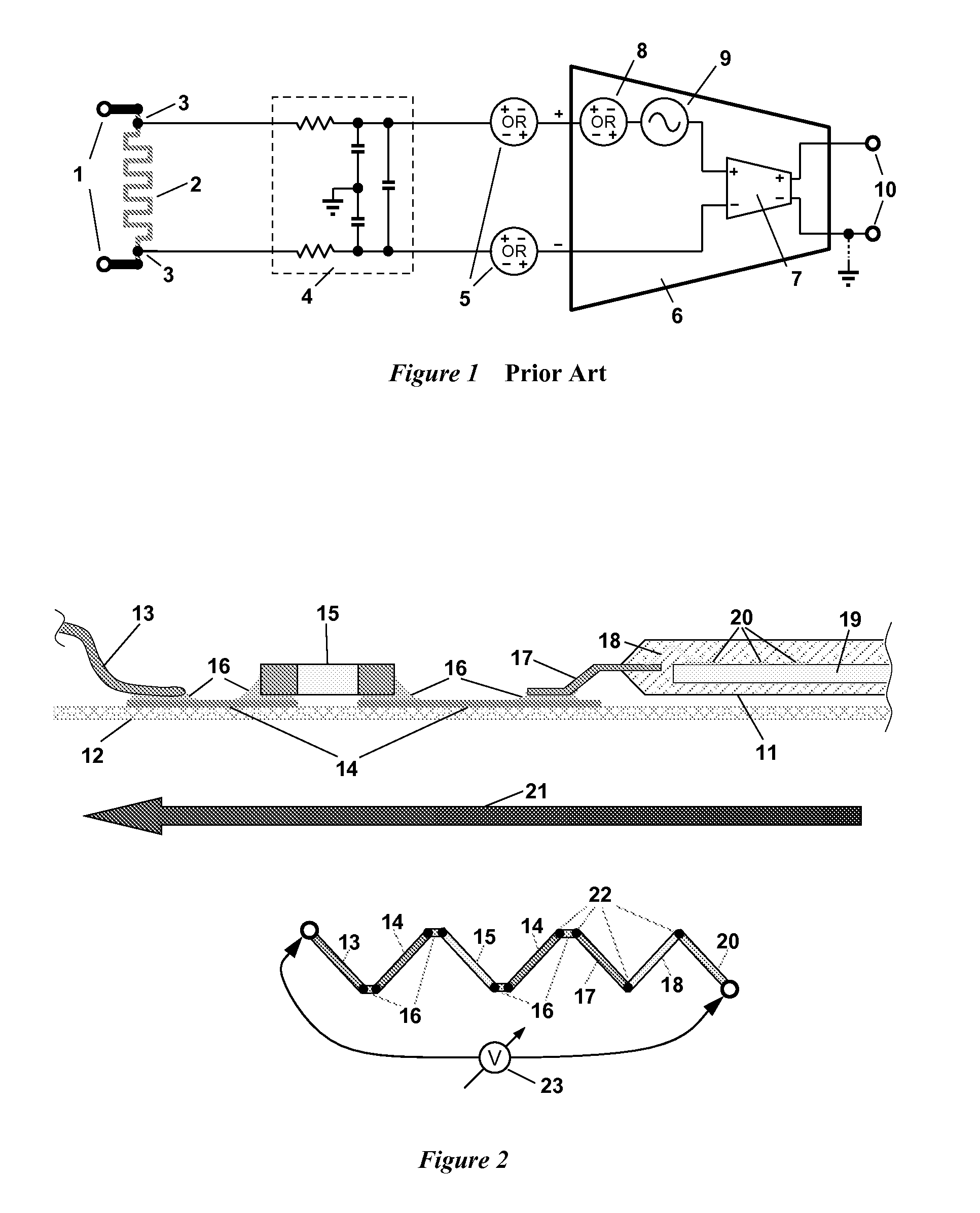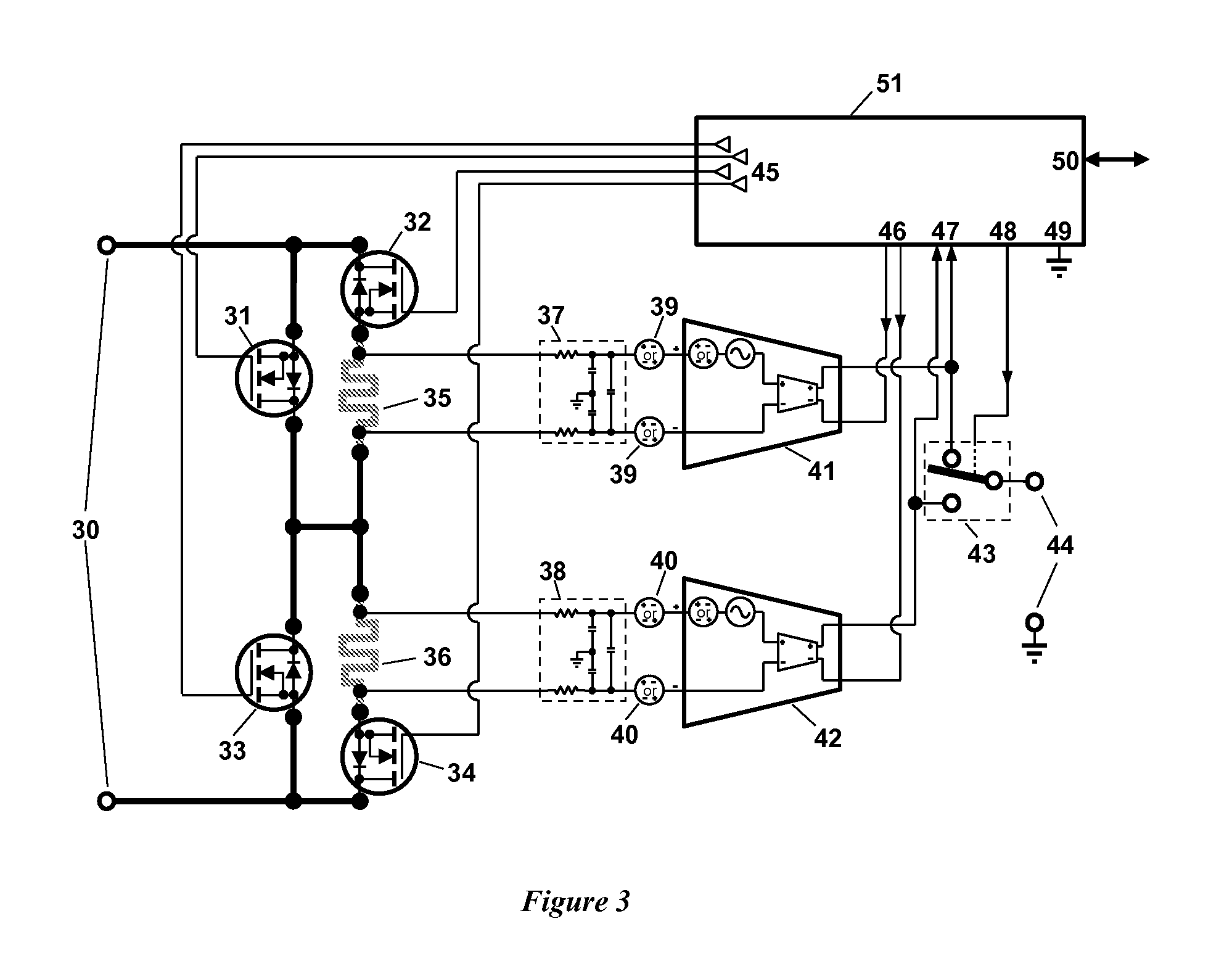High-accuracy low-power current sensor with large dynamic range
a low-power current sensor, high-accuracy technology, applied in the direction of pulse generators, instruments, pulse techniques, etc., can solve the problems of not being able to automatically compensate errors, not being able to measure the flow of electricity accurately over a wide dynamic range, and the physical size of the sense resistor b>2/b> can thus get to be a problem
- Summary
- Abstract
- Description
- Claims
- Application Information
AI Technical Summary
Problems solved by technology
Method used
Image
Examples
Embodiment Construction
[0055]One embodiment of the invention is shown in FIG. 3. There are two identical current shunts 35 and 36, encircled by power field-effect transistors (FETs) 31-34. Current sense signals pass via RFI filters 37 and 38, and then amplified by IA 41 and 42. An analog selector switch 43 delivers the signal to Output Terminals 44; this signal can be either the output from IA 41, or TA 42. The system presents itself to the outside world at load current terminals 30.
[0056]Under control of the control circuit 51, and via FET Drivers 45, the FETs 31-34 are turned either fully on or off, as required for the execution of the algorithm detailed in FIG. 4.
[0057]The action of FETs 31-34 can direct the current through the current shunts 35, 36, or can disconnect either of shunts 35, 36 by breaking the circuit (by means of FET 32 or 34) and by bypassing the current around each shunt (by means of FET 31 or 33).
[0058]As will be discussed below, the system is controlled in such a way that at any mome...
PUM
 Login to View More
Login to View More Abstract
Description
Claims
Application Information
 Login to View More
Login to View More - R&D
- Intellectual Property
- Life Sciences
- Materials
- Tech Scout
- Unparalleled Data Quality
- Higher Quality Content
- 60% Fewer Hallucinations
Browse by: Latest US Patents, China's latest patents, Technical Efficacy Thesaurus, Application Domain, Technology Topic, Popular Technical Reports.
© 2025 PatSnap. All rights reserved.Legal|Privacy policy|Modern Slavery Act Transparency Statement|Sitemap|About US| Contact US: help@patsnap.com



